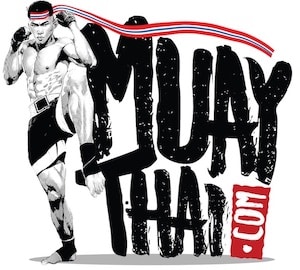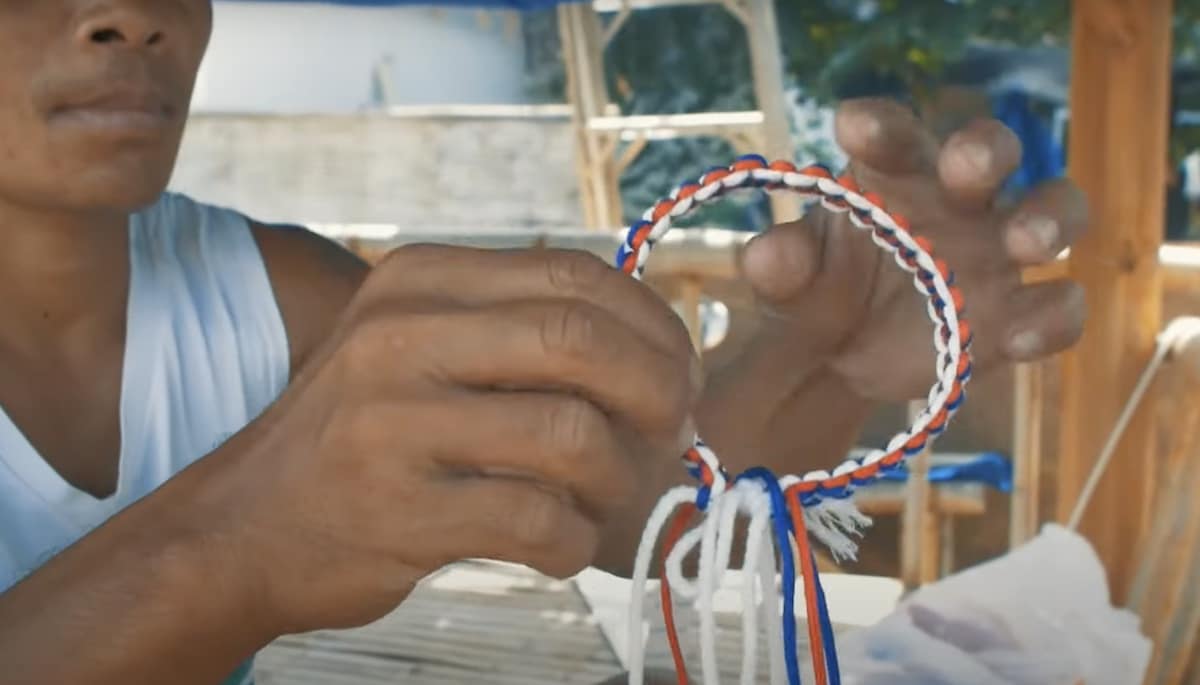Pra Jiad – Muay Thai Armbands: Everything You Need To Know
Pra Jiad are the armbands Muay Thai fighters wear. Muay Thai is steeped in rich traditions, history, and spiritualism which associates with the nation of Thailand. The Pra Jiad is an extension of the culture of Thailand. It can represent a Nak Muay’s relationship with their family or gym.
Muay Thai is a combat sport which has links with Thai Buddhism in addition to being a part of the nation’s long history. The fight for independence was earned through soldiers who were trained in Muay Thai. Both of these factors can be found in Muay Thai traditions that are still practiced to this day.
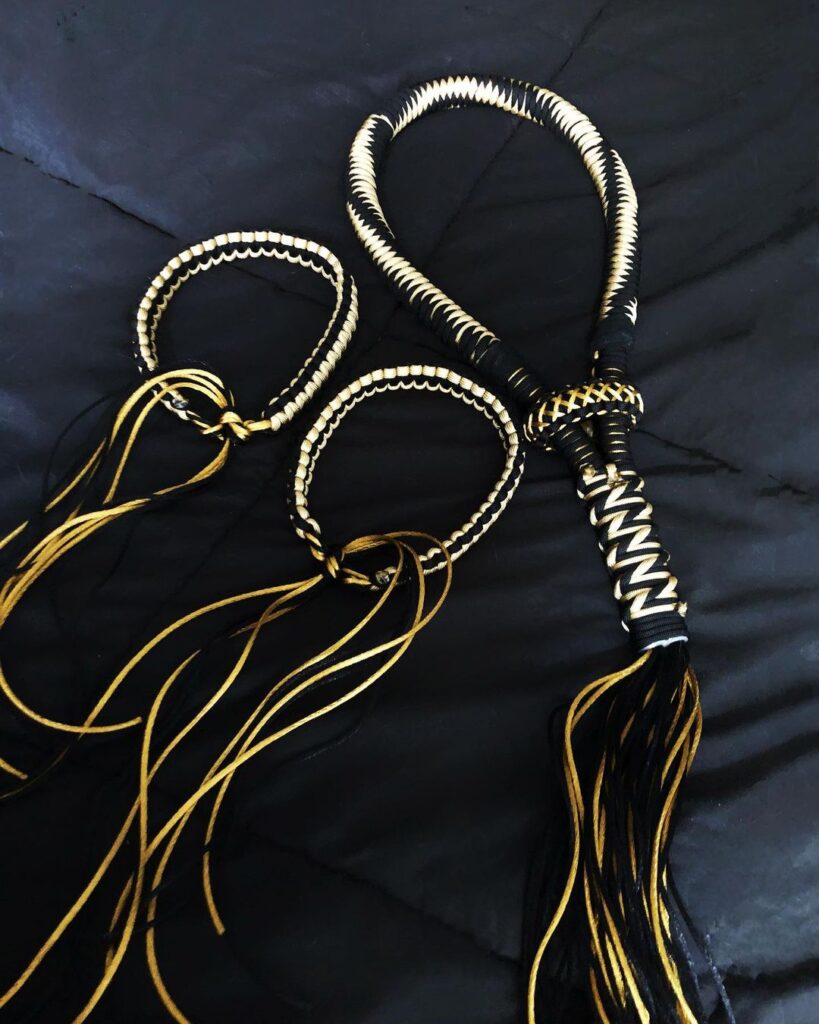
What is the Pra Jiad?
Pra Jiad are the armbands worn on the bicep of Nak Muay (fighters) during bouts. The armbands can have colors related to the fighter Kru (Trainer), gym, or will have some meaning to themselves.
The armbands would be blessed by Buddhist monks ahead of matches along with a Nak Muay’s Mongkon (headband). Pra Jiads must be treated with respect. People cannot step over them nor can these objects touch the ground. Pra Jiad are developed to bring good luck to combatants. The armbands can be worn in matches but not in training.
Upon entering the ring, Nak Muays (fighters) will be wearing a Mongkon on their head and Pra Jiad on their arms. While wearing these, fighters will begin a Wai Kru, which is a Buddhist prayer and dance. Once the Wai Kru is complete, the Mongkon is removed, and the match can begin, fighters are permitted and recommended to keep the Pra Jiad on throughout the entire fight.
The material of Pra Jiad is traditionally made from a piece of fabric from the family of a fighter, such as their mother’s sarong (dress). Today this practice is less common. Typically, Pra Jiad would be made from Hemp or Nylon.
Even outside of Muay Thai, Thai-born fighters are permitted to wear Pra Jiad. The striking legend and superstar Buakaw would wear his armbands throughout the K-1 Kickboxing Grand Prix matches in his quest for world titles. Female Nak Muay Phayahong captured gold in K-1 Kickboxing last year while wearing Pra Jiad. Although, the armbands are not permitted to be used in MMA or Olympic boxing.
It is not mandatory for fighters to wear Pra Jiad on their arms. For example, the Thai-born combat sports superstar Stamp Fairtex typically does not wear them whether she competes in Kickboxing or Muay Thai.
Pra Jiad is also recommended to be worn by foreign practitioners (farang) of Muay Thai. As the Pra Jiad is part of the sports ceremony, it would be rude for a farang to participate in Muay Thai and reject some parts of the tradition.
Most farang will elect to wear Pra Jiad such as former world champion John Wayne Parr of Australia, Jonathan Haggerty of the UK, Jean-Charles Skarbowsky of France, Jackie Buntan of the USA, and Joseph Lasiri of Italy, among many others.
The Pra Jiad and Mongkon are linked to history and tradition found in Thailand and Buddhism, and they have become normal wear for fighters. Nak Muay athletes will also typically wear hand wraps, a groin guard, and trunks. However, unlike the Pra Jiad and Mongkon, there are no sacred traditions associated with hand wraps, groin guards, or trunks.
How did the Pra Jiad originate?
The Pra Jiad dates back to Thailand’s fight for sovereignty and a fighter’s relationship with the family. Between 1547 and 1855 Siam (Thailand) and Burma were constantly fighting against one another in bloody conflicts.
At the time, the Thai military was trained in the ancient art of Muay Boran, a precursor to Muay Thai, and Krabi Krabong, an armed form of combat. Thai soldiers were dangerous with spears and swords or even unarmed.
Thai soldiers would traditionally tie a piece of their mother’s sarong (dress) before leaving for battle. It was blessed by Buddhist monks and was to bring good luck to the warrior. This tradition is still active even hundreds of years later.
Similarly, the headpiece Mongkon is found in Buddhist tradition and is linked to Thailand’s warfare. It was worn by soldiers during their prayer sessions and would then be worn into battle. It was blessed and said to bring good luck. This is the same reason it is still used in Muay Thai today. Both the Pra Jiad and the Mongkon are traditional to Buddhism and Thailand. Once blessed, both are considered sacred.
Families took care of their soldier sons and thus the warriors would eventually take care of their families. This is a tradition that also still persists in Muay Thai today. Many young fighters will join Muay Thai as a means of taking care of their family. Superstar Rodtang Jitmuangnon credits his parents as being vital to his combat sports success.
In an interview with ONE Championship, the Muay Thai world champion explained the link between family and Muay Thai. He said:
“My parents worked way harder than I have ever had to. I am indebted to them and want to repay what they did for us growing up. My mom taught me to fight for my life and to have a strong heart … I’m proud of myself for being able to take care of my family at such a young age. Whatever my mom wants to eat, I make sure she has it. Even though our life used to be hard, I’m grateful every day for my parents. I will never forget what they went through for us.”
Rodtang Jitmuangnon
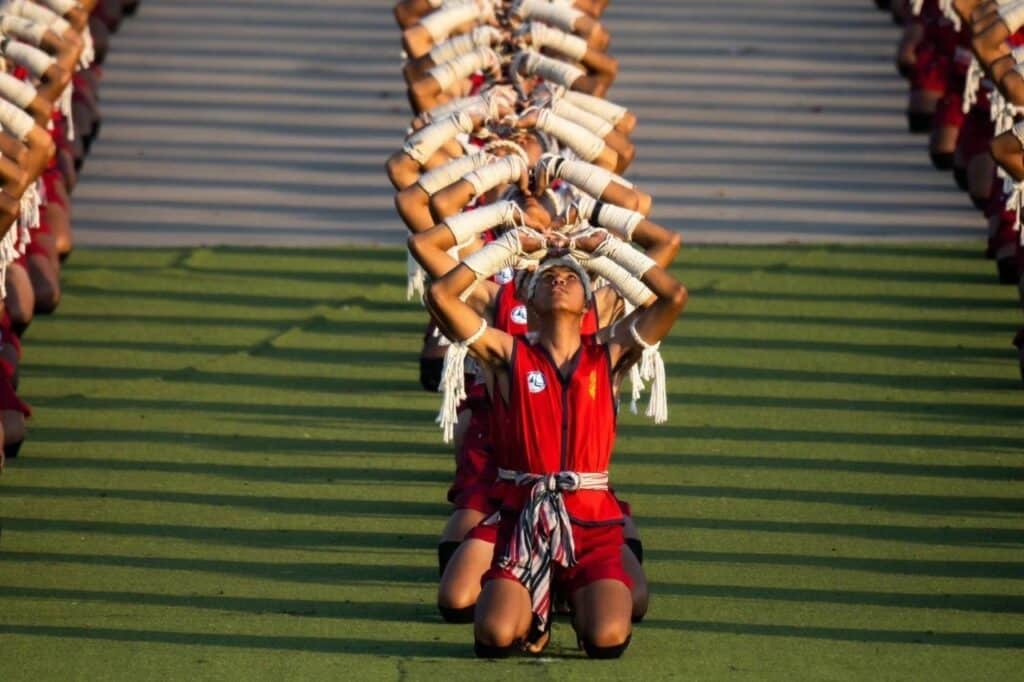
Pra Jiad Ranking System
Some western gyms, not in Thailand, use the Pra Jiad as a ranking system to show aptitude in Muay Thai. This practice is similar to belt systems found in Karate, Jiu Jitsu, or Judo. However, this practice is not traditional to Thailand in any way. No gyms in Thailand utilize this system.
In fact, the Pra Jiad color ranking system looks eerily close to that of Karate dojos. Both start out at White and progress through yellow, orange, green, and blue. Then Muay Thai Pra Jiad ranking system will continue with purple, red, brown, and finish with black. Even Muay Thai instructors can have Pra Jiad rankings systems starting at black and white, then red and black, then black and silver, and finally, black and gold.
The Pra Jiad ranking system has no relation to traditional Muay Thai. Many western Muay Thai gyms adopted this system so that new practitioners could quickly understand because so many athletes would have already been used to a belt ranking system from Jiu-Jitsu or Karate. Additionally, some claim to use a colored ranking system as it is an easy way to keep clients interested.
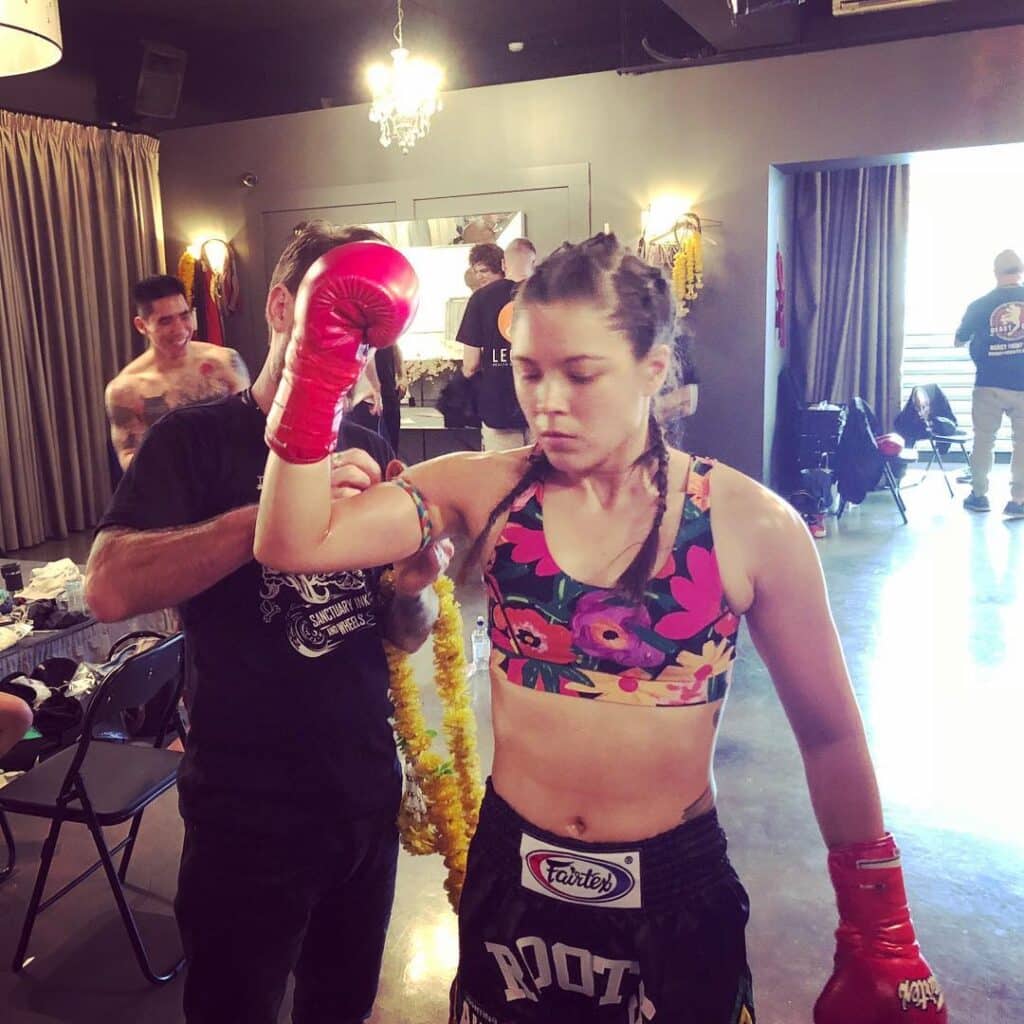
The link between Buddhism and Muay Thai
While Muay Thai is not itself a Buddhist tradition, it is drenched in Buddhist traditions and ceremonies. The Wai Kru is a Buddhist dance, and the Pra Jiad and Mongkon are both blessed by Buddhist monks. During times of conflict, Buddhist monks would train soldiers in the usage of Krabi Krabong and Muay Boran at Buddhist temples. Additionally, Muay Thai bouts were typically fought at a Buddhist Wat (temple).
During their lifetime, every male Muay Thai fighter will spend at least two weeks as a Buddhist monk. They will shave off their hair and eyebrows and trade their trunks for robes. Instead of daily training, they will engage in daily meditation.
International Kickboxing and Muay Thai star Buakaw discussed his time as a Buddhist monk during an interview with MuayThaiCitizen. He explained:
“I was able to fully immerse myself as a monk. During this period, my life was simple, revolving around performing chores, collecting alms, chanting, and Buddhist studies. If it weren’t for the prearrangement where I was already scheduled to fight, I would have liked to remain as a monk for a longer period of time.”
Buakaw
Trainer Gae is one of the most famed trainers in the sport of Muay Thai. Ajarn Gae has worked with fighters such as Superbon, Rodtang, Wondergirl & Supergirl, and even UFC fighter Marvin Vettori flew across the world to work with him.
While Gae was a promising Nak Muay, he broke his leg and was forced to retire from the sport. He then spent ten years of his life as a Buddhist Monk. In an interview with MuayThaiCitizen, he said:
“When I showed up at the temple, I only intended to enter monk-hood for 7 days. As a monk, you did little except for morning alms, partaking of food, temple chores and the rest of the time was spent in meditation. I experienced a lot of peace and so days turned into weeks, weeks turn into months. Before you know it, 10 years had passed.”
Ajarn Gae
It may not seem obvious from just watching the sport, however, Muay Thai and Buddhism are closely linked to one another. The Pra Jiad is an extension of that tradition.
The Pra Jiad finds its ancient roots in warriors looking to keep a bond to their home family. It would be blessed by Buddhist monks for good luck. These traditions with the Pra Jiad and Nak Mauy still persist to this day.
